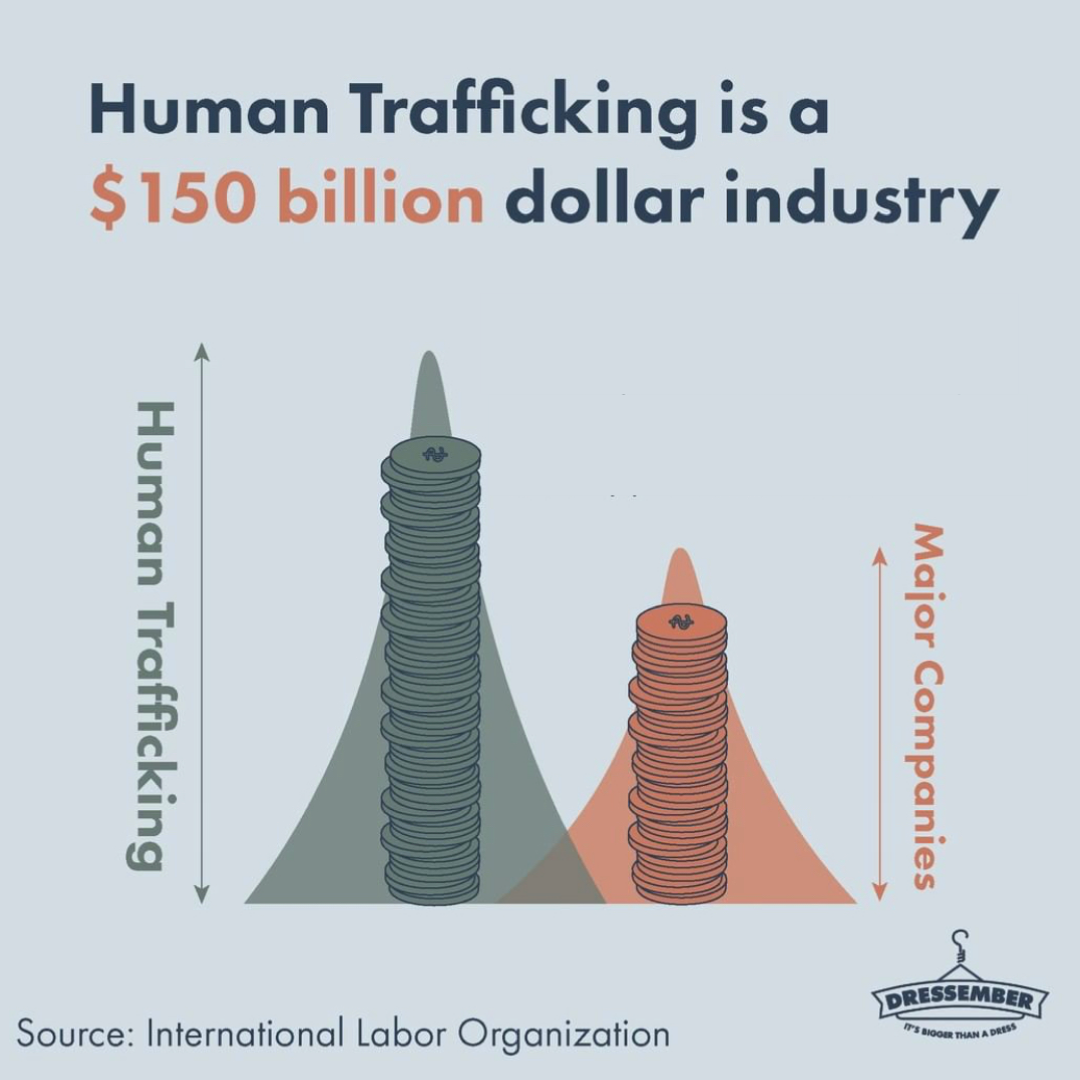How big of a business is human trafficking?
Dressember Reading Day #5
Every day during the month of December, we’re answering common questions and breaking down different aspects of human trafficking on our blog and Instagram. Join us in raising awareness about the injustice of human trafficking by sharing, donating, or joining the Dressember campaign (it’s not too late!).
The Story
Human trafficking is estimated to be a $150 billion industry today.
Wait, did you say $150 billion?
Yes, the International Labor Organization (or ILO as the kids say) estimates that human trafficking brings in $150.2 billion annually. For reference, that’s more than some of the earnings of major companies like Microsoft and Facebook!
Where does this money come from?
The largest part (66%) of this huge number comes from sexual exploitation, which brings in an estimated $99 billion per year, despite being one of the less common form of human trafficking. Domestic servitude and labor exploitation (which includes things like bonded labor and child labor) generate $8 billion and $43.2 billion respectively.
Pause. How does human trafficking generate revenue?
Human trafficking is obviously generating a huge amount of revenue, but profits aren’t reported and created the same way companies like Apple or Facebook’s are. The ILO calculates human trafficking revenue as the difference between the value added by the worker and the amount the worker is being paid. Human trafficking, therefore, is essentially contributing to more than $150 billion in money saved annually.
Hold on. So forced labor can be paid?
Yes. Labor is considered forced if a person is paid 40% or less of what they should be paid.
Wow.
Exactly. This doesn’t even include all of the human trafficking revenue. It’s not like the CEOs of the highly illegal human trafficking rings are sitting around a conference table to discuss quarterly reports. It’s hard to come up with numbers, which means it’s possible (and likely) the reality is even worse than the ILO’s projection.
Okay, I get that this is a problem. But... why?
Most of the time, people who have experienced a sudden setback and are already vulnerable (read: immigrants, undereducated, poor, and unskilled) are the likeliest victims of this type of forced labor. But it can impact highly skilled individuals too. Individuals are lured in with promises of education, lucrative jobs, loving relationships, or simply a better life in a new place. Traffickers often keep them in this situation by telling them that they must repay some irreparable debt with their labor.
Alright, got it. What can I do?
The only way to end human trafficking once and for all is to break demand. This is easier said than done due to the nuances and unknowns of human trafficking.
One way to decrease demand is by refusing to purchase non-Fair Trade products, particularly clothing. The fashion industry is a hotbed for trafficking, and by purchasing ethically made fashion items, you can lessen demand for fast fashion, often made by individuals in forced labor situations. This extends to agriculture, construction, and many more forms of manual labor.
Being an informed consumer allows you to shift demand to ethical sources, shrinking that $150 billion industry. Bit by bit, working together, we can make the value of the industry low enough that it no longer makes financial sense to be involved in the human trafficking industry. By becoming responsible consumers, we can end human trafficking once and for all.
Further Reading:
Read the full article in TIME: Learn more about the lucrative business of human trafficking
Watch the TED Talk: I was human trafficked for 10 years. We can do more to stop it
Check out Dressember’s directory of ethical brands: Ethical Fashion Directory
Coming from Canada, you can give & join the Canadian campaign at www.dressember2019.ca >>
About the Author
Miranda Cecil is a spring gal who loves traveling to new places as well as her local frozen yogurt pump. When she's not finishing homework or watering her succulents, she loves to ski, read, and play her rollout piano. Miranda is hoping to turn her passion for human rights and safety into a career as she studies political science and urban planning at the University of North Carolina (Go Heels!)


